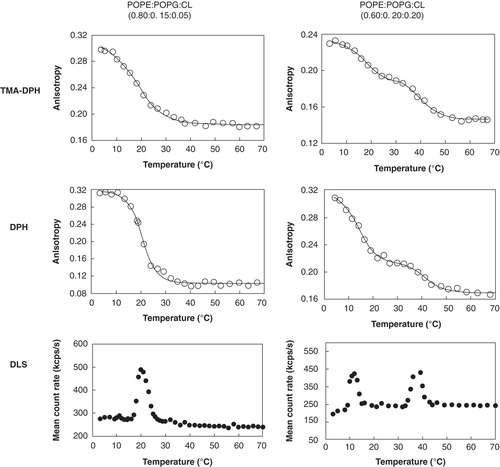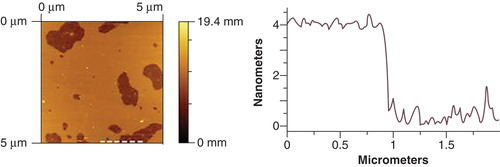Figures & data
Table I. Mean lipid transition temperatures (Tm/°C) obtained for the different lipid systems studied, using TMA-DPH and DPH steady-state fluorescence anisotropy, and by dynamic light scattering (DLS) methodology described by Michel et al. (Citation2006). All lipid mixtures were studied in 10 mM HEPES buffer, pH 7.4, NaCl 0.1 M. The values represent the mean value of the five independent measures.
Table II. Different molecular species present in the cardiolipin mixture from E. coli extract.
Table III. Comparison of the first transition temperature (Tm/°C) obtained for systems containing different POPE/POPG/CL proportions.

